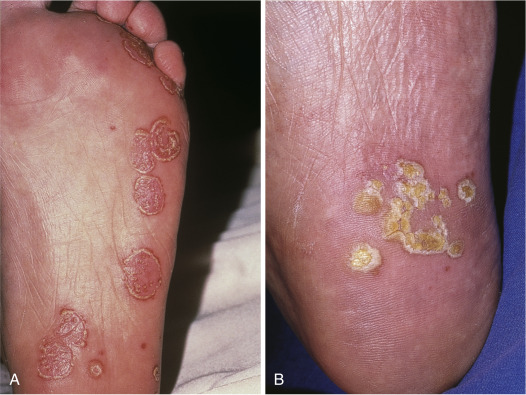AUTHOR: Glenn G. Fort, MD, MPH
Reactive arthritis is one of the seronegative spondyloarthropathies, so called because serum rheumatoid factor is not present in these forms of inflammatory arthritis. Its characteristic clinical course consists of urethritis, conjunctivitis, and arthritis. Hans Reiter was a Nazi war criminal, and many believe that he should no longer be given name recognition to designate this syndrome. Reactive arthritis is an asymmetric polyarthritis that affects mainly the lower extremities and is associated with one or more of the following:
- Polyarthritis:
- Heel pain and Achilles tendinitis, especially at the insertion of the Achilles tendon
- Plantar fasciitis
- Large effusions
- Dactylitis, or “sausage toe”
- Urethritis
- Uveitis or conjunctivitis; uveitis can progress to blindness without treatment
- Keratoderma blennorrhagicum, circinate balanitis:
- Aortic regurgitation similar to that seen in ankylosing spondylitis
- Epidemic Reiter syndrome after outbreaks of dysentery has been well described.
- Genetically susceptible HLA-B27 individuals are at risk for developing reactive arthritis after infection with certain pathogens:
- Symptom complex indistinguishable from reactive arthritis has been described in association with HIV infection.

